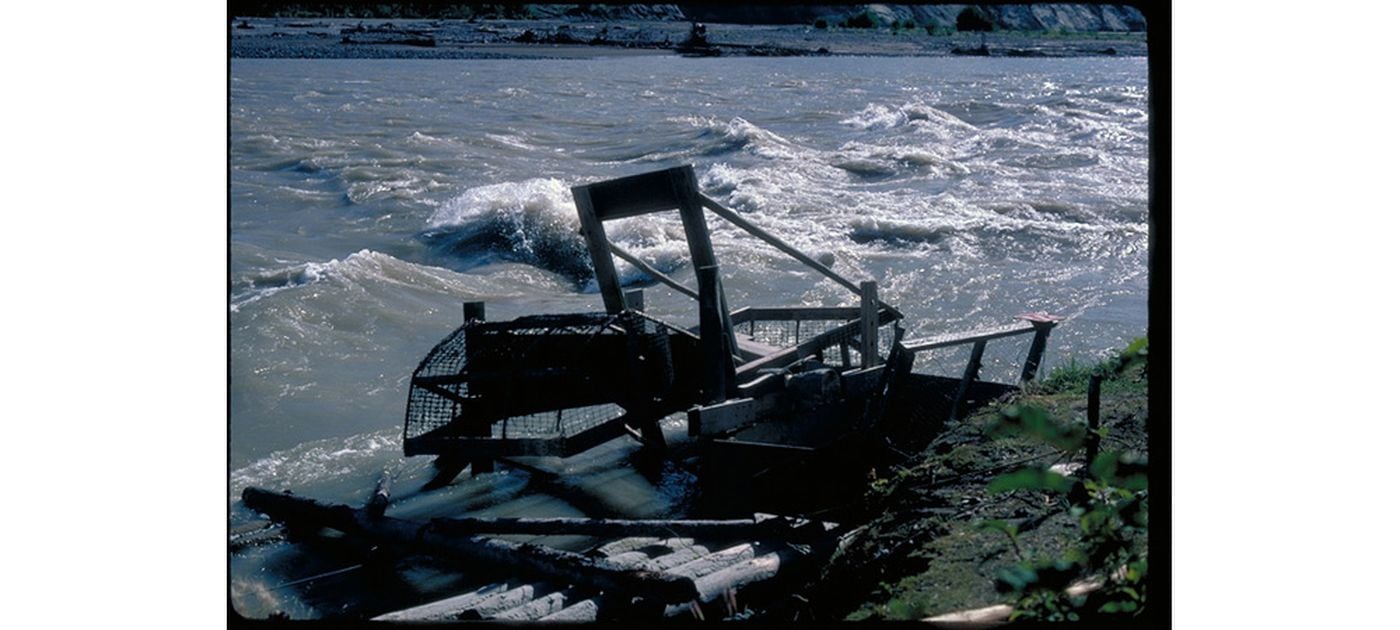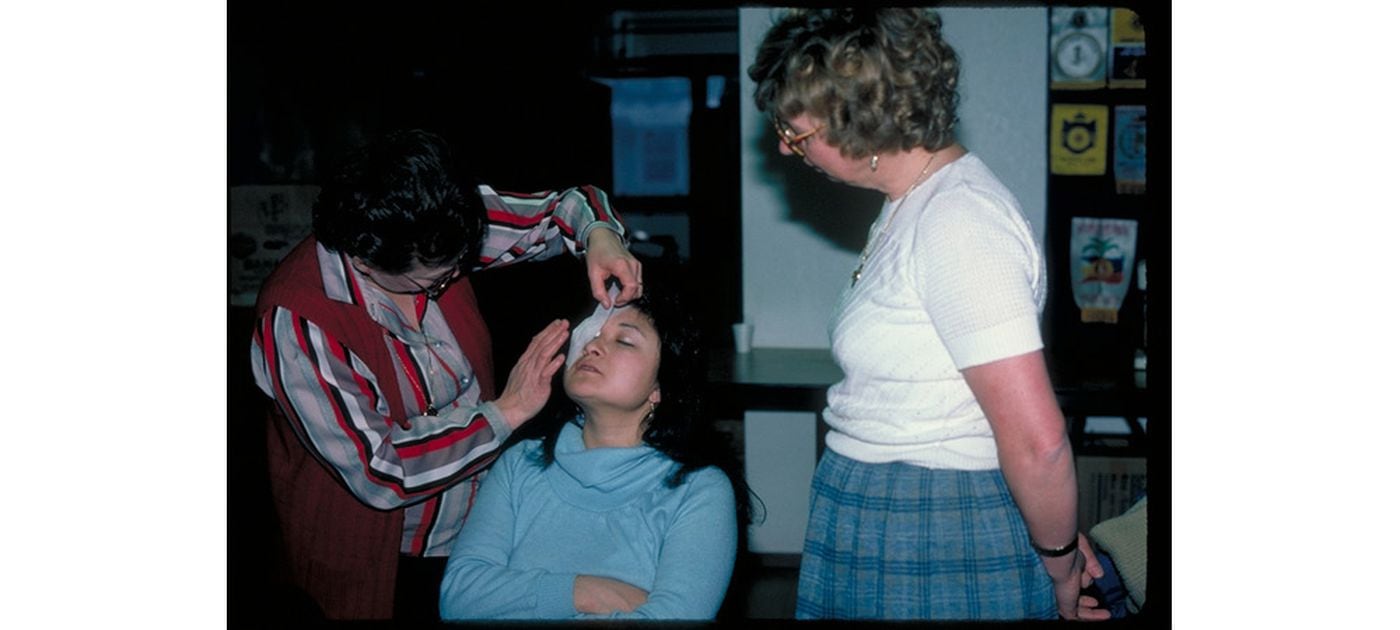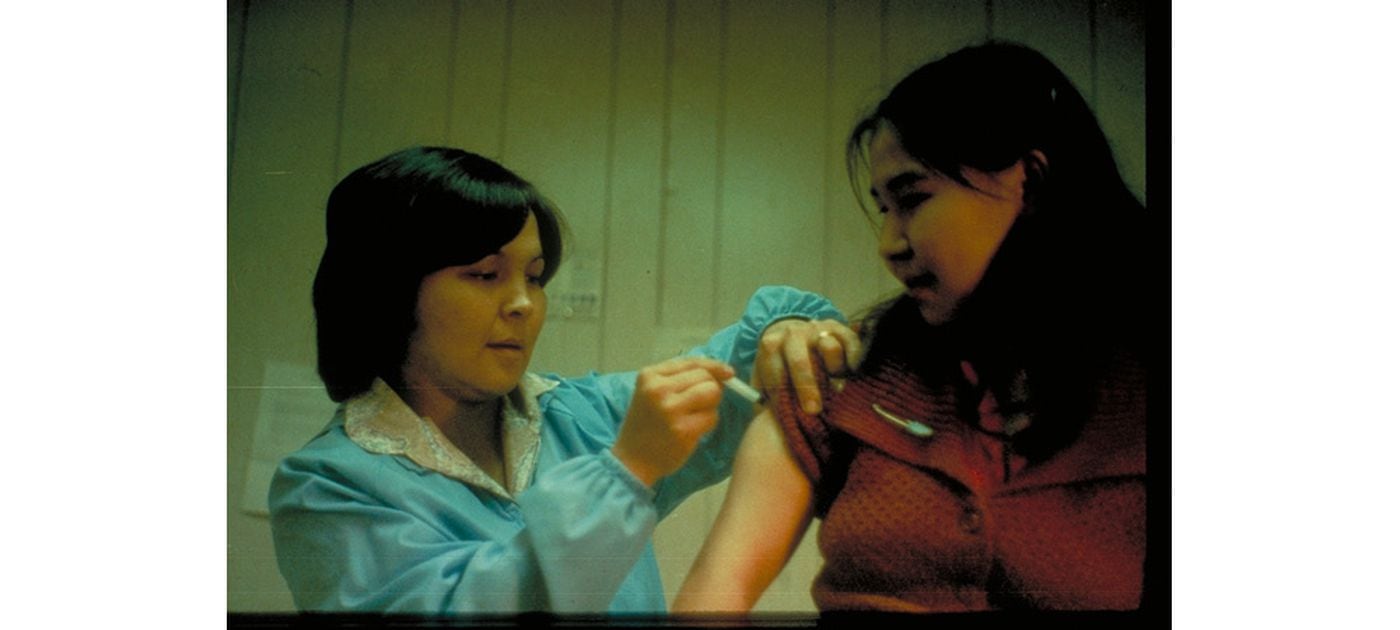Our Health in Our Hands, Part 2: The road to self-governance, 1968-1980s
February 19, 2019
This is part two of a four part sponsored series with the Anchorage Daily News.
Fish strips hung in the smokehouse. Flies and mosquitoes buzzed around the outhouses.
Pompan stepped off the boat in a three-piece suit and wing tip shoes.
“I don’t know where he thought he was going, but he dressed for D.C., and he came to Indian Country,” recalled Paul Sherry.
Sherry, who would later go on to be the first CEO of Alaska’s statewide Tribal health consortium, was one of a group of Tanana Chiefs Conference health board members and staff gathered at the fish camp to learn from Pompan about the Indian Self-Determination and Education Assistance Act, a new law poised to open up a whole new universe of possibilities for Alaska Native Tribes.
It was the kind of training that’s be held in a conference center or hotel, but as Sherry tells it, TCC Health Director Claude Demientieff Jr. wanted to show people that the road to self-determination didn’t have to follow the beaten path. Alaska Native people could forge their own way, guided by their own values.

It was as much a learning experience for the attendees as it was for Pompan — who continued to work with Tribal health leaders but presumably packed differently for his next trip to Alaska.
If a big city attorney on the banks of the Yukon seems like an odd visual, it might also be the most vivid example of the monumental shift that was then taking place across Alaska’s Tribal health care system. For the first time, Alaska Native people were in control of their health priorities — not as wards of the federal government, but as its partners.
The early days of health self-determination in Alaska
In 1968, the Indian Health Service Alaska Area was led by Gerald Ivey, an Athabascan man from McGrath who felt strongly that Alaska Native people needed more of a voice in their health care. During Ivey’s tenure, IHS authorized the creation of the Alaska Native Health Board to provide the Alaska Area Native Health Service with input into its programs and priorities.
Around the same time, a movement was afoot to begin improving health care at the regional level. In the Bering Strait and Yukon Delta regions, Norton Sound Health Corp. and Yukon-Kuskokwim Health Corp. were established with funding through the federal Office of Economic Opportunity. Each corporation was governed by a board elected by local Tribal councils.
Another program, Healthright, funded by the OEC, was an AFN initiative to fund health services development in the rest of the state. In some regions, this money was used to expand existing organizations by adding health care programs within nonprofits such as TCC, the Maniilaq Association, and Chugachmiut. In others, separate nonprofits were established, leading to the development of Southeast Alaska Regional Health Consortium and the Bristol Bay Area Health Corp.

Self-determination and self-governance emerged early as priorities. Leaders felt it was essential for Alaska Native communities to take an active role in managing health care problems and solutions, rather than being treated as passive recipients of federal services.
“The health system can be as good as it can be, but if the people don’t become a partner to the health system, then you don’t see improvement,” Sherry said.
Federal legislation brings sweeping change
In December 1971, Congress approved the Alaska Native Claims Settlement Act. The 13 new ANCSA regional corporations created a second, for-profit tier of Tribal resources, while preserving the nonprofit network of Tribal organizations and associations, which address health care, education, social services, along with the federal obligation to support those programs.
As the dust from ANCSA settled, a shift started to take place. IHS began contracting Alaska initiatives to regional nonprofits, beginning at the front lines with Community Health Aides. The Community Health Aide Program was unique to Alaska and made more sense under Tribal management, Sherry said, making it the perfect place for Tribes to begin dipping their toes into health care.
Then came another turning point: the 1975 passage of the Indian Self-Determination and Education Assistance Act. Previously, government officials had the option to enter into contracts with Tribes, as IHS had done with the Community Health Aides. Under the new law, if a Tribe asked to provide services to its own members, the federal agency was now required to agree to a contract.
With the regional health organizations already in place, Alaska Tribes were ready to begin taking responsibility for health care. Year after year, Tribal organizations brought more programs under their management through IHS contracts.
Bureaucracy moves slowly, and IHS was no exception. Tribal organizations sometimes felt as though IHS contracting requirements were unduly burdensome, from highly detailed budgets to rules around who could approve certain hires.
“It used to drive us absolutely crazy, the amount of control that they demanded,” Sherry said.
In fairness, he added, it was critical that the Tribal organizations be set up for success.
“If you don’t have systems in place to support your employees, to house your employees, to manage your funds, all of that, you’re going to fail,” Sherry said. “The Indian Health Service, to their credit, demanded that these organizations prove that they could do that.”
Dr. Dick Mandsager, who took over the Alaska Area director role in 1985, acknowledged the process could be complex and challenging even as IHS recognized the importance of supporting Tribal groups.
“Generally speaking, we all saw that our job was to make this transition happen,” he said.

Slow, steady progress
The Self-Determination Act was written with the Lower 48 reservation system in mind. Tribal governments were required to authorize any new contract that served their members, a task that was more challenging in Alaska.
“The fact that every village is its own Tribe makes (Alaska) very different from any other region in the IHS,” Mandsager said. With regional health organizations serving multiple Tribal governments, the process of communicating the details of each contract and securing approval from dozens of Tribes could be time-consuming.
Slowly but surely, progress was made. Tribal organizations worked with the Alaska Legislature to secure capital funding for clinic and hospital buildings. Improved runways and telecommunications, along with water and sanitation, were other top priorities. State grants helped augment existing programs such as emergency medicine and substance abuse treatment. Funding increased with the passage of the 1976 Indian Health Care Improvement Act, which afforded Tribal health organizations the ability to bill Medicare and Medicaid for eligible patients.
In 1980, Bristol Bay Area Health Corp. made history when it assumed exclusive responsibility for its service area, including Dillingham’s Kanakanak Hospital, becoming the first Tribal group in the U.S. to manage an IHS hospital. By the mid-1980s, several more of the regional Tribal health organizations were ready to assume responsibility for management of their IHS service unit hospitals.
Behind the scenes, there were even bigger changes beginning to take shape.
Next: A new hospital, a new compact, and a new Tribal health consortium emerges.
